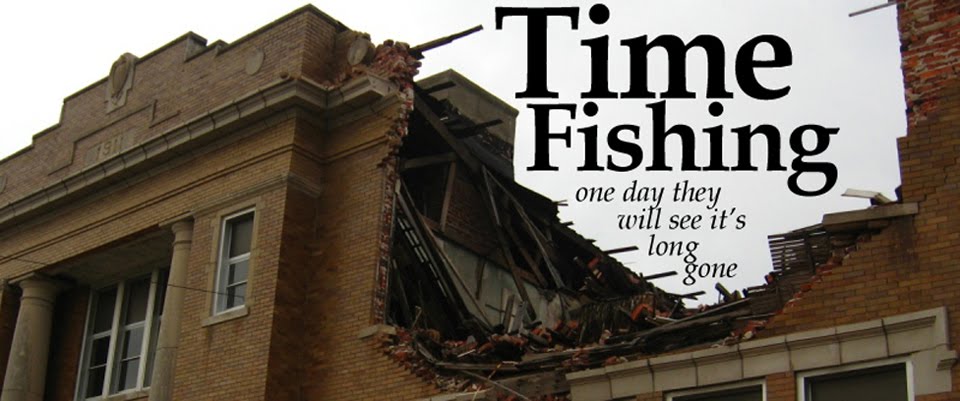Billions of years ago, when people wanted to travel long distances, they didn't seal themselves into a glass and plastic cocoon and cruise an interstate for 500 miles. Instead, they'd climb aboard a giant metal monster called a locomotive. But, unless you were a hobo, traveling by train required visiting your town's local depot.

This is the original station in Beebe, AR (note again an old telephone pole in the background). Many old train stations have been renovated, restored and turned into museums. This one houses a tanning salon. Still, I would prefer it to be home to a business like this and retain its original flavor than simply molder, like the one in Searcy (more on that later). One of my favorite local depots, and another point of inspiration for this blog is the depot residing in Bald Knob.

While it doesn't look like much from the exterior, this Missouri-Pacific Depot has been renovated and is now home to an extensive model train shop as well as a small museum of Arkansas railroad paraphernalia. It has also become a kind of home base for the White County Historical Society. My travels tend to land me here, and I've learned quite a bit about this part of Bald Knob from the folks who populate the depot. For example, I discovered the street across from the depot was a red light district! But that's another story for another time. I don't have any adequate pictures of the depot's museum (go visit it for yourself), but here are a few more of the station and of its model trains.




Bald Knob will doubtlessly pop up again in the course of this blog. The last depot I want to talk about today is the one in my own town. As Arkansas' train culture evaporated over the latter half of the 20th century, railroad tracks began to disappear. Tracks used to run right through Harding, but were pulled up about 10 years ago. As such, sometimes a town's depot may be a bit hard to locate: Searcy's is in a spot with no tracks whatsoever around it. In fact, you've certainly driven past it multiple times and probably didn't know what it was.

The old station is on the corner of Main and Beebe Capps, now overshadowed by the McDonald's and Burger King shooting angry glances at each other from opposite sides of the street. It has been a feed store in the past, and now a couple of old women are selling random stuff (that explains the fluorescent poster boards) out of it. I didn't know it was a station until the man who runs the museum at Bald Knob told me. Upon closer observation, the building has a telltale sign of a train building: a loading dock.

The tracks used to run right past that dock (and some still protrude from the earth farther down the road). As the train tracks disappeared, this part of Searcy slipped into obscurity; a 19th century wooden passenger car found itself marooned on a lonesome piece of track and eventually became a private residence. Later, the historical society rescued the car. It's the last of its kind and will be the subject of a later entry.
Train travel is all but dead. The Arkansas Encyclopedia tells me that at its height, Arkansas had around 4,000 miles of train tracks. It now has closer to 2,000. The man at Bald Knob told me the last time a passenger car passed through their station was in the 70s. The more I think about it, the more I'd love to just ride a train from Bald Knob to Little Rock. I know and understand the necessity of interstates and 70 MPH speed limits, but there is something undoubtedly romantic about trains, and our country has just about lost that romance. Sure, there's still Amtrak, and sure, trains are still in constant use across the pond (heck, I rode trains everywhere in Japan), but it's here that I miss them the most.
Here's to the trains.

































